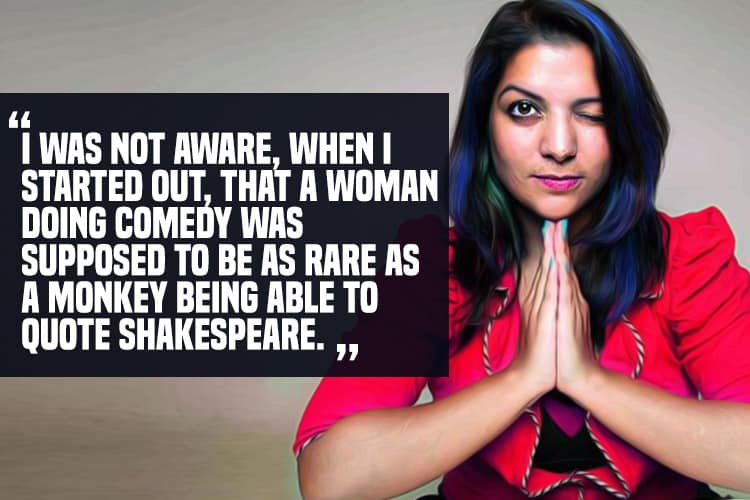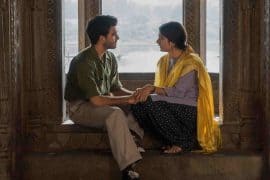The young stand-up scene in India has opened up numerous avenues for people wishing to work in comedy. But young as it is, this horizon is already dominated by men, both in terms of numbers and reach. Read on to find out why this is problematic and how we can rectify it.
The Indian stand-up comedy scene is on the rise. Social media has given certain comics and collectives an almost cult-like following, the kind that was once reserved for movie stars. In fact, for movie stars, collaborating with these young comedians is one of the best ways to gain social media traction while promoting a film. However, the stand-up scene and what it stands for has changed drastically in the last five years. Stand-up comedy does not represent a random person cracking self-depreciating jokes in a club on a Saturday evening anymore. Today, it stands for millions of views on YouTube and Facebook combined and the content going viral within hours of being uploaded. For instance, every time All India Bakchod (AIB) puts up a video, my Facebook timeline experiences a sense of mass hysteria, with people wildly sharing and appreciating their content.
But like every young and vibrant industry, it seems that women are not given their due in comedy either. Some of the most prominent faces in the Indian stand-up comedy scene are AIB, East India Comedy (EIC), Schitz en Giggles (SnG) Comedy, Vir Das, Kanan Gill, Kenny Sebastian, and Radhika Vaz among others. While Radhika Vaz, Mallika Dua, Aditi Mittal, and Kaneez Surka hold a place in this scene, they do not enjoy the same kind of following that their male counterparts do. To put things in perspective, let us take a look at the numbers. Aditi Mittal, Radhika Vaz, and Mallika Dua – three of the most renowned female comics in India – collectively have 230,000 subscribers on YouTube, while Kenny Sebastian alone has one million. There appear to be two basic reasons for this. The first is the presence of this “guy gang” of young male comics that seems to have hijacked the current scene. The second is that people simply assume that women are not funny, even when they clearly are.
This “guygang” that I talk about is a group of young men who extensively collaborate with other male comics and provide each other new horizons for exposure to a different audience. This is a symbiotic relationship of collaborations, guest appearances, and drop-ins that help both parties by making their content more interesting and simultaneously increasing their fan base. AIB, SnG Comedy, Kanan Gill, Kenny Sebastian, Zakir Khan, and Abish Mathew are always working with each other, thus effectively doubling their audience each time they collaborate. The lack of such a group for women results in the reach of Vaz and Mittal being limited to the audience that is subscribed only to their respective channels. The second phenomenon that plagues female comics is that people believe women cannot be funny. This syndrome that dissociates women from humour is deeply rooted and ingrained in our minds. Come to think of it, when has a guy ever used humour as a defining feature of the women in his life? The idea that women cannot be funny is so entrenched in our minds that it prevents us from appreciating the funny women out there. For example, Radhika Vaz did a hilarious piece on women being uncomfortable with bodily function around someone they just started dating. The sketch was relatable and garnered immense applause from the live audience. However, a lot of people in the comments section said things like “How is this comedy?”, “Do people even laugh on her jokes?”, and “This is about just as funny as a miscarriage.” This is problematic since most male comedians put up pieces that are, at best, mildly funny but their work does not incite the same kind of anger. Female comics are expected to deliver every punchline and call-back that is nothing short of absolutely hilarious because if they fail to do so, their work would be seen as another excuse to reinforce the belief that women are not funny. Indian female comics therefore have to work twice as hard to get half as far.
The brand of comedy that these women put forth is not only relatable, but also very real. Through their sketches, they call out everyday sexism and double standards, all the while making us laugh. Their brand of comedy, which is both “woke” and devoid of sexist jokes, fails to make certain sections of the population laugh simply because the joke is on them. In recent times, people have degraded what humour means by limiting it to making fun of men in drag or using the “annoying girlfriend” trope for laughs. These jokes are popular because they require little thought and provide the comfort of upholding the status quo. It is in such times that these female comics act as beacons of light, proving that humour does not have to put a community or gender down to make people laugh. Another valuable lesson from this situation is to understand the need for working together and being united in order to grow. When women start to actively seek out, mentor, promote, and educate other women in all spheres, be it films, music, comedy, politics, or business, we will witness the stratospheric rise of a generation of women who value friendship and sisterhood and are duly appreciated and recognised for their work.
Feature Image Credits: Blogbeats
Kinjal Pandey
[email protected]





Comments are closed.